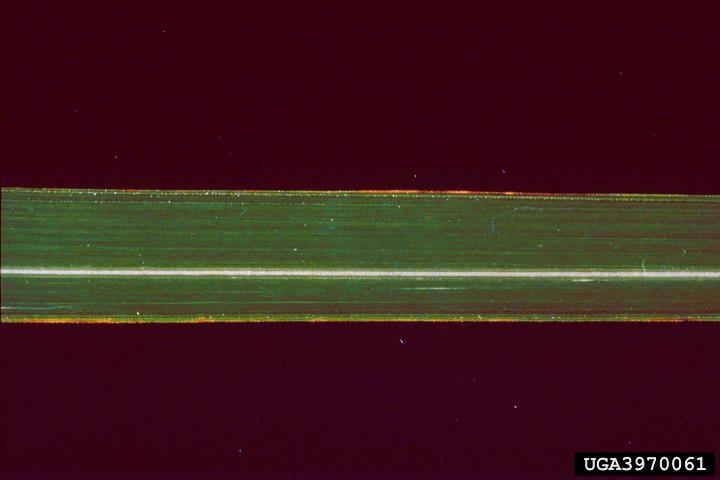We have mentioned in past articles that cogongrass has reached the coastal areas of the Florida panhandle. This aggressive invasive plant was accidentally introduced to the U.S. in the early 1900s through the Port of Mobile. It was intentionally introduced to parts of Florida, as a forage grass, in the 1930s and 1940s. It spread quickly across the landscape replacing native grasses in pastures and spreading as understory in timberlands. Its serrated edges are non-edible for most livestock, and it burns very hot during prescribe burns killing many trees in forests. It is one of the most noxious invasive plants in our country and is found in all 67 counties in Florida.

Photo: UF IFAS
A few years ago, cogongrass was found growing around a swimming pool area at a condominium on Perdido Key. The concern is the classic methods of treatment could be harmful for sea oats and other desirable coastal plants. Care had to be taken as Escambia County developed a plan for treatment. A search for coastal distribution on the national database EDDMapS showed the grass has reached several coastal communities in Mississippi, Alabama, and the Florida panhandle. Seeds are dispersed by the wind. The plant develops a “fluffy” seed inflorescence similar to dandelions. Though it could have spread via the wind to the islands, it can also be transported by wildlife and mowing equipment. Mowers who cut the plant while in bloom can collect the seeds and disperse them to other locations when they move from one job to the next. They can do the same with cut rhizomes that remain on their equipment. Once germinated the extensive rhizome system beneath the ground can quickly spread across the landscape killing other grasses to make room for itself.

Photo: UF IFAS EDIS
Now is the time to identify whether the grass is on your property. The blades are a yellow-green color and, if at least 12” in length, have serrated edges. The white mid-line of the blade will be offset of middle. As I write this, April 7, the “fluffy” seed heads are present making it even easier to identify. These seed heads are only present for a couple of weeks. It is not recommended to mow the grass while the seeds are present, to reduce the spread of the plant. The best time to treat the grass for removal is in the fall. Experts recommend an initial fall spray followed by another in the spring.

Photo: UF IFAS EDIS
We will be surveying Pensacola Beach and Perdido Key for the presence of this grass in the next few weeks. Check your property, if you think you may have this plant contact your county extension office for advice on how to manage. We will work with you to develop a management plan. This is not a grass we want growing on our beaches.
 0
0
